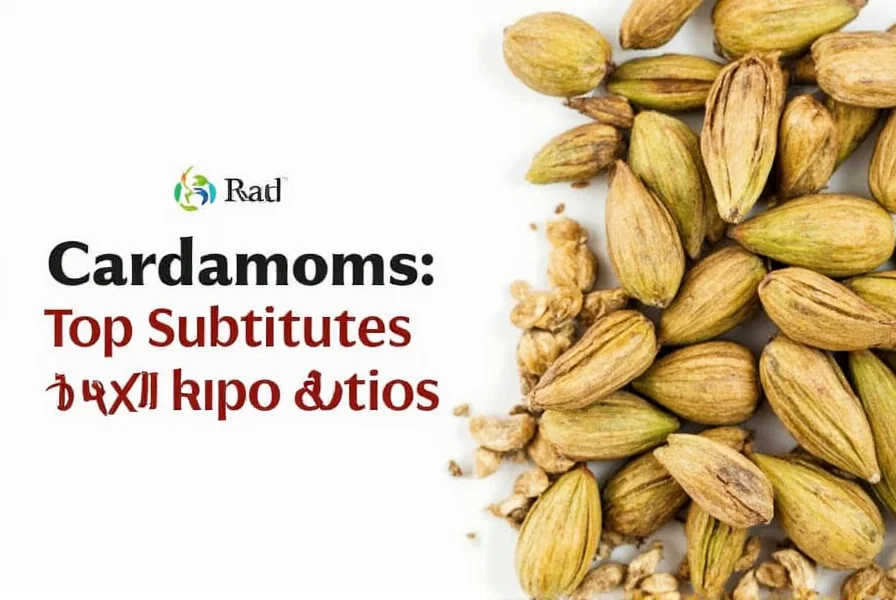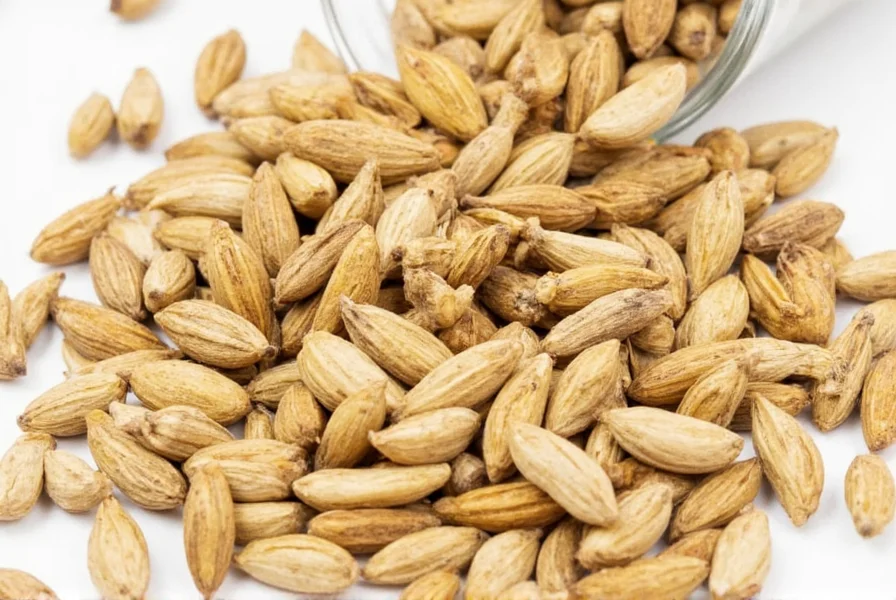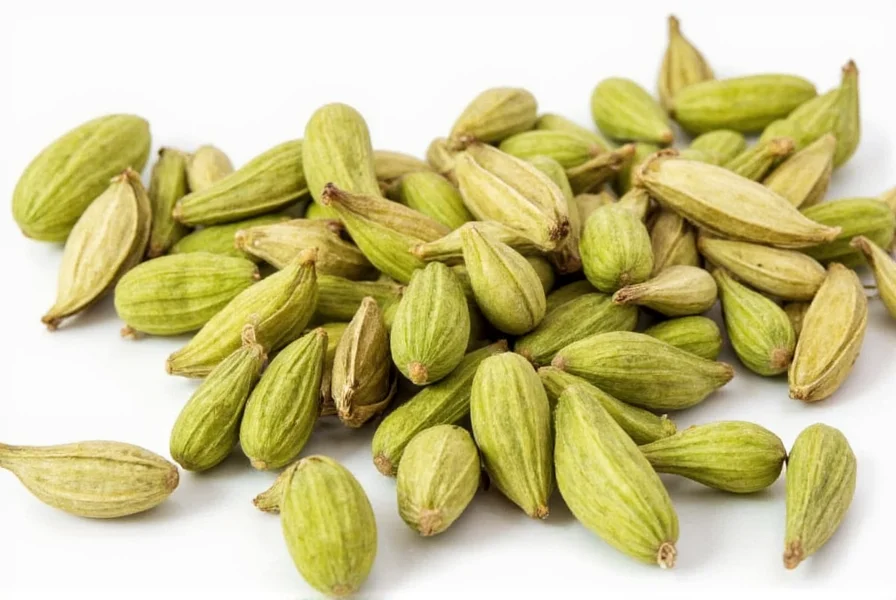The three best cardamom alternatives are cinnamon combined with nutmeg, allspice, and ginger. Cinnamon-nutmeg blend (1:1 ratio) works best for baking, allspice offers the closest singular substitute for Scandinavian and Middle Eastern recipes, while ginger provides a brighter alternative for chai and Indian dishes. Each substitute varies in intensity, so adjust quantities based on your specific recipe requirements.
Running out of cardamom doesn't have to derail your baking or cooking plans. This comprehensive guide explores practical alternatives that maintain the aromatic complexity cardamom brings to both sweet and savory dishes. Whether you're preparing Scandinavian pastries, Indian curries, or Middle Eastern rice dishes, understanding proper substitutions ensures your recipes succeed even without this prized spice.
Why You Might Need a Cardamom Substitute
Cardamom ranks as the world's third most expensive spice after saffron and vanilla, making it less accessible for some home cooks. Its distinctive citrusy, floral notes with hints of mint and eucalyptus create irreplaceable flavor profiles in many global cuisines. Common reasons for seeking alternatives include:
- Unavailability in local grocery stores
- Budget constraints for frequent cooking
- Allergic reactions or dietary restrictions
- Flavor preference adjustments
- Running out mid-recipe
Understanding cardamom's unique flavor chemistry helps identify suitable replacements. Green cardamom contains cineole (also found in eucalyptus), limonene (citrus), and linalool (floral notes), while black cardamom offers smokier, camphorous characteristics. The best substitutes mimic these flavor compounds as closely as possible.
Top Cardamom Alternatives Explained
Cinnamon and Nutmeg Blend
This combination creates the most versatile cardamom replacement for baking applications. Cinnamon contributes warmth while nutmeg adds the necessary complexity. For every 1 teaspoon of ground cardamom, use ½ teaspoon cinnamon plus ½ teaspoon nutmeg.
Best for: Scandinavian pastries, apple pies, pumpkin bread, and other sweet baked goods. This blend works particularly well as a cardamom alternative for baking where the spice's floral notes aren't critical.
Professional bakers often add a pinch of allspice to this mixture for enhanced complexity when substituting in recipes like Swedish kardemummabullar. The cinnamon-nutmeg ratio can be adjusted based on desired warmth—use more cinnamon for stronger warmth, more nutmeg for earthier notes.

Allspice
Allspice provides the closest singular substitute to cardamom, earning its name because it tastes like a blend of cinnamon, nutmeg, and cloves. Its flavor profile shares cardamom's warm, slightly peppery notes with subtle citrus undertones.
Substitution ratio: Use ¾ teaspoon allspice for every 1 teaspoon of cardamom. Allspice's stronger flavor means you'll need less than a 1:1 replacement.
This works exceptionally well as a cardamom replacement in Indian recipes like biryani and garam masala, where cardamom's floral notes play a supporting role rather than starring position. Middle Eastern spice blends like baharat also respond well to allspice substitution.
Ginger
Fresh or ground ginger offers a brighter, more citrus-forward alternative that works particularly well in beverages and certain savory dishes. While lacking cardamom's floral complexity, ginger shares similar citrus notes that make it effective in specific applications.
Best substitution: Use ½ teaspoon ground ginger or 1 teaspoon freshly grated ginger per 1 teaspoon cardamom. For chai tea specifically, combine ginger with a pinch of cloves for optimal results as a cardamom alternative for chai tea.
Chefs specializing in Indian cuisine often recommend this combination for masala chai when cardamom isn't available. The ginger-clove pairing captures cardamom's warming properties while providing complementary citrus notes.
Cardamom Substitution Comparison
| Alternative | Flavor Profile | Best For | Substitution Ratio | Limitations |
|---|---|---|---|---|
| Cinnamon-Nutmeg Blend | Warm, sweet, earthy | Baking, sweet dishes | ½ tsp cinnamon + ½ tsp nutmeg per tsp cardamom | Lacks floral notes |
| Allspice | Warm, peppery, subtle citrus | Savory dishes, spice blends | ¾ tsp per tsp cardamom | Stronger flavor requires adjustment |
| Ginger | Bright, citrusy, warming | Chai, beverages, some curries | ½ tsp ground or 1 tsp fresh per tsp cardamom | Lacks complexity of whole cardamom |
| Clove-Cinnamon | Sharp, warm, sweet | Meat dishes, stews | ¼ tsp clove + ½ tsp cinnamon per tsp cardamom | Overpowering if misused |
Special Considerations for Specific Applications
Whole Cardamom vs. Ground Substitutions
When recipes specify whole cardamom pods (common in Indian and Middle Eastern cooking), the substitution approach differs from ground cardamom alternatives. For dishes where pods infuse flavor then get removed:
- Use 2-3 whole cloves per pod for savory dishes
- Add a cinnamon stick plus 2-3 allspice berries for rice dishes
- For desserts, try a strip of lemon zest tied with kitchen string for easy removal
These whole alternatives provide similar aromatic infusion without the visual presence of cardamom pods. Remember to remove these substitutes before serving, just as you would with cardamom pods.
Cardamom Alternative for Savory Dishes
Savory applications require different considerations than sweet recipes. In Middle Eastern and Indian cuisines where cardamom appears in meat dishes and rice preparations:
- Combine equal parts coriander and cumin for biryani
- Add a pinch of fennel seeds to garam masala blends
- Use star anise sparingly in Persian rice dishes (¼ star anise per 3 cardamom pods)
Chef Maria Rodriguez of Spice Journey Culinary School notes: "When substituting in savory applications, focus on capturing cardamom's warming properties rather than its floral notes. The goal is maintaining the spice blend's balance, not perfect replication."
Practical Tips for Successful Substitution
Follow these professional techniques to maximize your cardamom alternatives' effectiveness:
- Bloom spices in oil first for better flavor extraction, especially important with substitutes that lack cardamom's volatile oils
- Adjust gradually—start with ⅔ of the recommended substitution amount, then taste and adjust
- Combine substitutes for complex dishes (e.g., allspice + ginger for Indian recipes)
- Consider freshness—older substitutes lose potency faster than cardamom
- Toast whole substitutes before grinding to enhance flavor complexity
For Scandinavian baking specifically, adding a few drops of lemon extract to your cinnamon-nutmeg blend creates a closer approximation of cardamom's citrus notes. This technique works particularly well as a cardamom alternative for baking traditional Swedish and Norwegian pastries.

Finding Your Perfect Substitute
The ideal cardamom replacement depends on your specific recipe and flavor goals. Consider these decision factors:
- Dish type: Sweet vs. savory applications require different approaches
- Cardamom's role: Is it a dominant flavor or background note?
- Other spices present: Existing flavors may complement certain substitutes better
- Cultural authenticity: How critical is maintaining traditional flavor profiles?
When experimenting with cardamom replacement ratio adjustments, keep detailed notes about what works for your palate. Over time, you'll develop personalized substitution guidelines that deliver consistent results across your favorite recipes.
Frequently Asked Questions
What's the best single spice substitute for cardamom?
Allspice provides the closest singular substitute for cardamom, particularly in savory dishes. Use ¾ teaspoon allspice for every 1 teaspoon of cardamom required. Its warm, slightly peppery flavor with subtle citrus notes mimics cardamom's complexity better than any other single spice, making it an effective cardamom replacement in Indian recipes and Middle Eastern spice blends.
Can I use cinnamon instead of cardamom in baking?
Yes, but cinnamon alone won't provide the complete flavor profile. For best results as a cardamom alternative for baking, combine equal parts cinnamon and nutmeg (½ teaspoon each per teaspoon of cardamom). This blend captures cardamom's warmth while adding necessary complexity. For Scandinavian pastries, add a few drops of lemon extract to better replicate cardamom's citrus notes.
What's the best substitute for cardamom in chai tea?
For chai tea specifically, use a combination of ginger and cloves as your cardamom alternative for chai tea. Substitute ½ teaspoon ground ginger plus a pinch of ground cloves for each cardamom pod. Fresh ginger works even better—use 1 teaspoon freshly grated ginger per cup of tea. This pairing captures cardamom's warming properties while providing complementary citrus notes essential to authentic chai flavor.
How do I substitute whole cardamom pods in recipes?
For whole cardamom pod substitution in rice dishes or stews, use 2-3 whole cloves per pod for savory applications. In desserts, try a strip of lemon zest tied with kitchen string for easy removal. For biryani or pulao, combine a small cinnamon stick with 2-3 allspice berries. Remember to remove these substitutes before serving, just as you would with cardamom pods.
Why does my cardamom substitute taste different than expected?
Cardamom substitutes often taste different because they lack cardamom's unique combination of citrus, floral, and minty notes. Most substitutes emphasize only one aspect of cardamom's complex flavor profile. To improve results, try combining substitutes (like allspice plus ginger) and adjust quantities based on your specific recipe. Also ensure you're using fresh spices, as older substitutes lose potency faster than cardamom.











 浙公网安备
33010002000092号
浙公网安备
33010002000092号 浙B2-20120091-4
浙B2-20120091-4